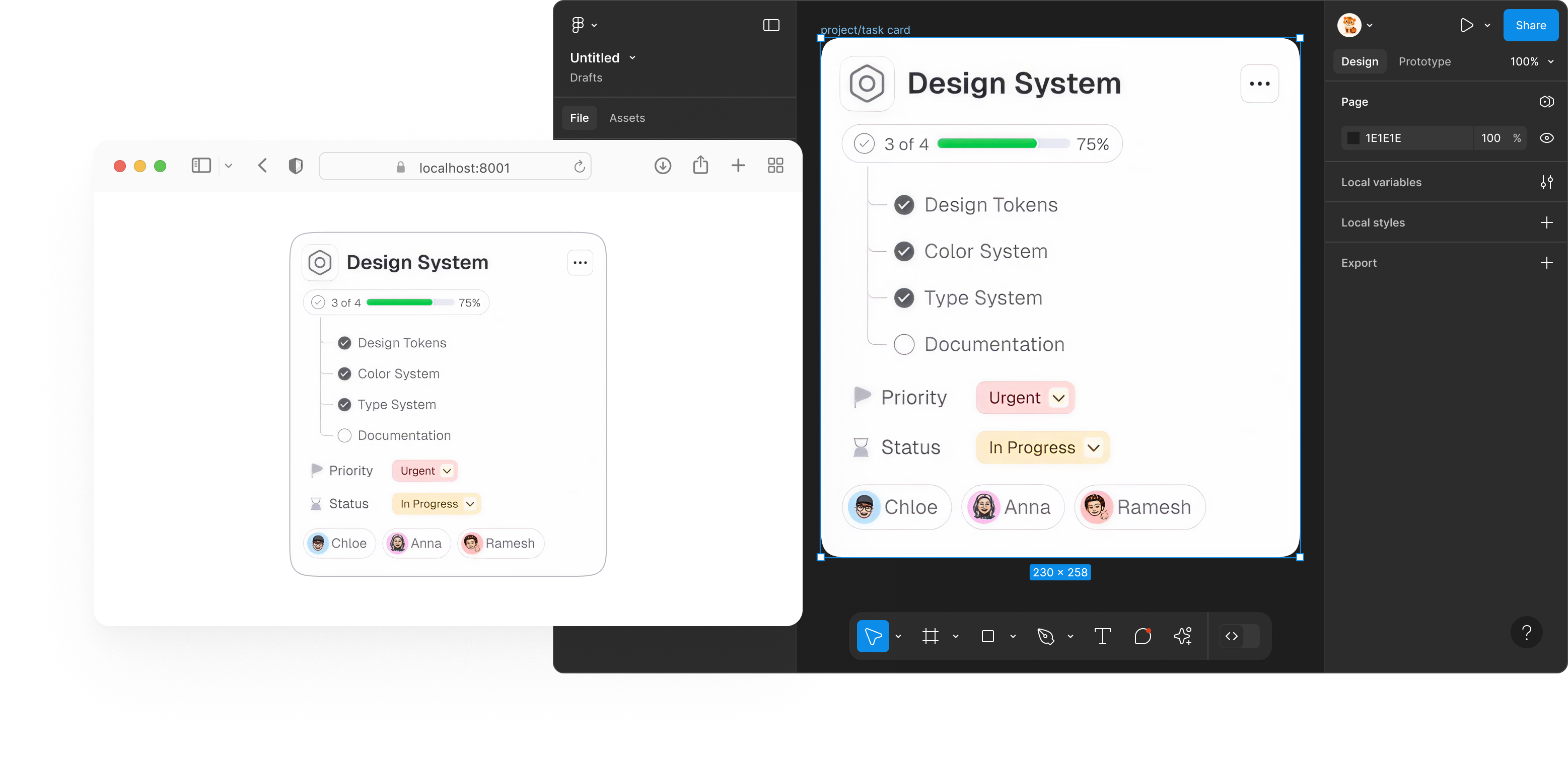Most powerful way to doFigma Variables
VV turns Figma variables into a living graph. Designers build and debug variables visually. Developers ship the exact same values via a tiny build-time resolver.
See your variable system in 2D.
Explore collections, modes, and aliases as a living graph. Trace dependencies, validate values, and debug visually before you export for build.
AI that designs, binds, and refactors variables.
Ask for what you need: discover relationships, create collections and modes, bind attributes, rename at scale, or generate color scales to match a reference. Results are explicit and reviewable.
Design‑to‑dev in one move
Export the graph in VV as JSON. Use the same variable binding and your build outputs will now match your Figma file — deterministically.
// useTokens.js
import { getVariableByName } from '../design-tokens/resolver.js'
// resolve exactly what you render
const text = getVariableByName('text/regular', modes)
const bg = getVariableByName('card/bg-fill', modes)
const accent = getVariableByName('large number/fill', modes)
// use text, bg, accent directly in your UI
Zero drift. Deterministic by design.
The values developers get are the same values designers see, by definition.
No translation layer, no divergence, no surprises.

Pricing
Start free. Upgrade when you need AI assistance, cross library reference, team seats, or enterprise controls.
FAQ
Why do you say “variables” instead of “tokens”?
VV works with Figma variables as they exist in your file: names, collections, modes, and aliases. We avoid the overloaded word “token” so there’s no confusion with API keys or usage counts — and no extra translation layer. What you design is what you ship.
How does VV keep design and build aligned?
The resolver evaluates the same relationships as Figma at build time. When you export the VV graph once, your app resolves variables deterministically for any mode. No manual mapping, no drift.
Can VV handle multiple libraries and remote collections?
Yes. Both the visualizer and the resolver understand references across libraries and remote collections, so previews and build outputs stay consistent.
Where do I store the export in my repo?
Keep it in a predictable path like src/vv/variables.json. Import it at build time and emit stable artifacts (CSS/TS) for your runtime to use.
Do I need to paste the JSON export into an AI?
No. As long as your variable bindings are set correctly, you’re done. Only the resolver reads the JSON at build time. AI helps write bindings in Figma — it never needs the JSON.

